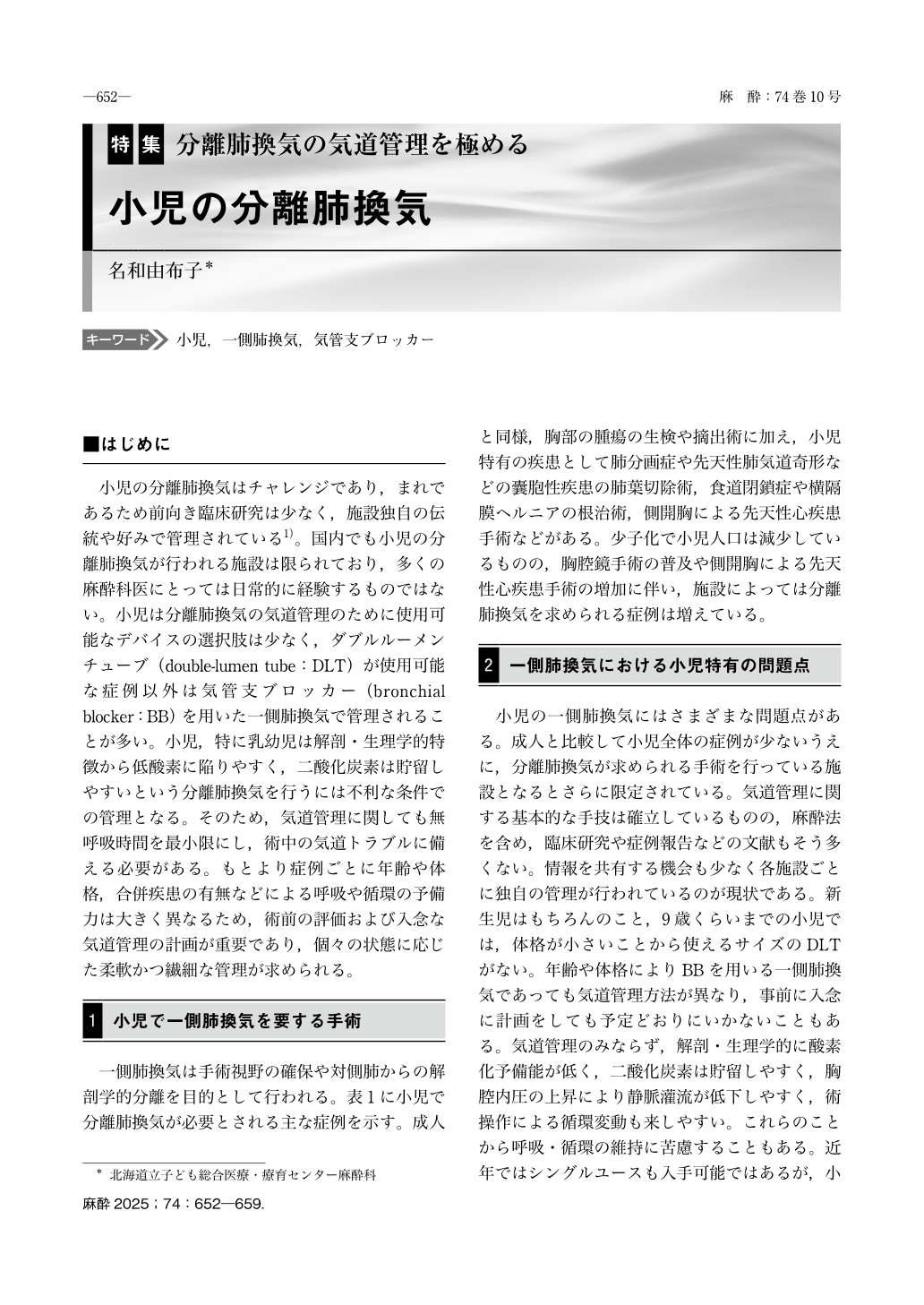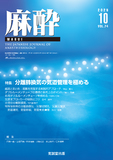Japanese
English
- 有料閲覧
- Abstract 文献概要
- 1ページ目 Look Inside
- 参考文献 Reference
はじめに
小児の分離肺換気はチャレンジであり,まれであるため前向き臨床研究は少なく,施設独自の伝統や好みで管理されている1)。国内でも小児の分離肺換気が行われる施設は限られており,多くの麻酔科医にとっては日常的に経験するものではない。小児は分離肺換気の気道管理のために使用可能なデバイスの選択肢は少なく,ダブルルーメンチューブ(double-lumen tube:DLT)が使用可能な症例以外は気管支ブロッカー(bronchial blocker:BB)を用いた一側肺換気で管理されることが多い。小児,特に乳幼児は解剖・生理学的特徴から低酸素に陥りやすく,二酸化炭素は貯留しやすいという分離肺換気を行うには不利な条件での管理となる。そのため,気道管理に関しても無呼吸時間を最小限にし,術中の気道トラブルに備える必要がある。もとより症例ごとに年齢や体格,合併疾患の有無などによる呼吸や循環の予備力は大きく異なるため,術前の評価および入念な気道管理の計画が重要であり,個々の状態に応じた柔軟かつ繊細な管理が求められる。
One-lung ventilation(OLV)is rarely used in pediatric anesthesia and is often managed based on institutional traditions and individual preferences, thus making its application challenging. Several approaches to achieving lung separation in children exist, including manual lung compression, artificial pneumothorax, and the use of single-lumen tubes, endobronchial blockers(EBBs), or double-lumen tubes. Since pediatric patients vary significantly in age, body size, and underlying disease, each of which affects their respiratory and circulatory reserves, careful preoperative evaluation and airway management planning are essential. In smaller children, the range of available devices is limited, and OLV is frequently accomplished by using EBBs. Due to their anatomical and physiological characteristics, children are more susceptible to hypoxemia and hypercapnia, and it is therefore crucial to minimize the apnea time during a device’s placement and manipulation. Preparation for intraoperative airway and circulatory complications―particularly hypoxemia―is necessary to ensure a rapid response. Proper postoperative pain assessment and analgesia are also important for achieving the patient’s stable recovery. In the inherently complex and high-risk OLV procedure, a well-structured perioperative plan that includes contingency strategies and troubleshooting options tailored to the patient’s size and surgical procedure is vital for ensuring safety and success.

Copyright © 2025 KOKUSEIDO CO., LTD. All Rights Reserved.


